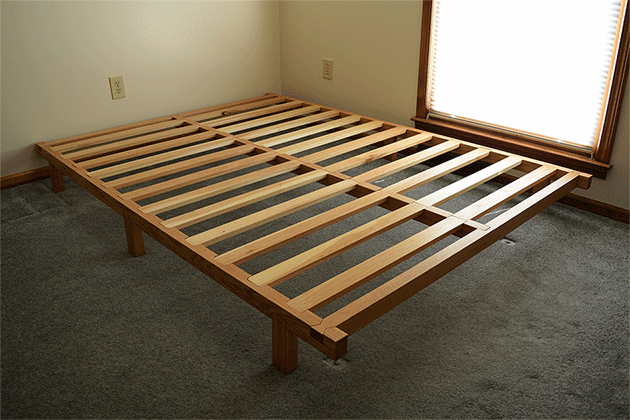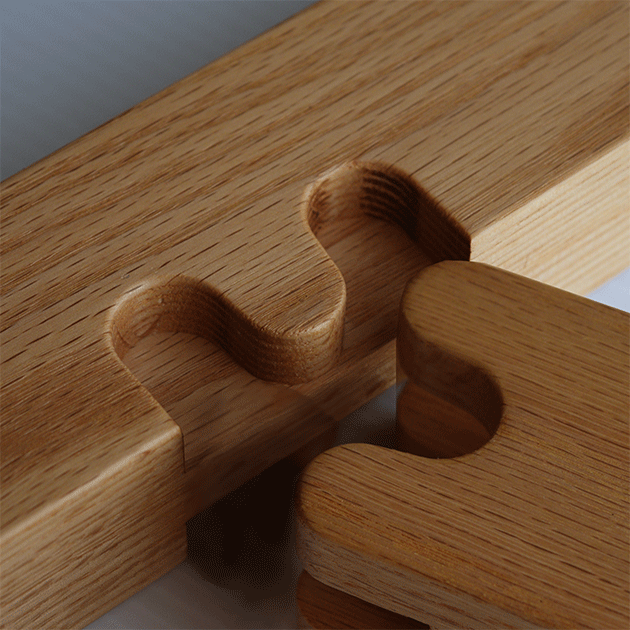Queen size bed frame
Design Process
Research and conceptualization
Inspired by Ikea's designs of minimal glues and fasteners, I set out to design a bed frame with this feature in mind. I studied several types of older furniture and joinery that did not rely on fasteners. I found great examples in a book by Hideo Sato, The Complete Japanese Joinery, and other examples in books on nail-less Shaker Furniture, and British Campaign Furniture.
Constraints
Basic design was to create a simple platform, easy to setup and takedown, require no tools, and be compactable in some way; through either folding on hinges or disassembly.
Itteration
I iterated on several ways to construct drop fit and gravity held joints. And how many joints and components to have, the trade off being more components can compact into a smaller space, but also increases the complexity, the possibility of losing components, and of assembling them incorrectly.
Joinery Decisions
The joints I ended up designing had three primary qualities. (1) Ease of Manufacturing, the joints are designed to be easily made with a hand router and a laser cut plexiglass template or with a CNC router. (2) Ease of Assembly, each joint contains only two components, unlike some japanese joinery which often has three or more. (3) Strength, the joints are rounded and robust enough to hold up under normal use and to not be easily damaged when disassembled and transported.
Manufacturing
Using SketchUp I modeled the components and drafted some basic plans for myself to use. I also designed plexiglass router guides to use to make all of the joinery. I drafted them in Illustrator, laser cut the plexiglass, and assembled them with countersunk flatheads into MDF. The bed frame is made from Red Oak for its strength and the slats are Hickory for its flexibility.
Final Design
FEATURES
The final design uses a minimal number of components. Six legs, five bars for the frame, and twenty-four slats. All of the joints are gravity held with a slight friction fit. No fasteners or glue is used, no tools are needed, and the frame can be easily assembled and disassembled by one person.
Improvements and Changes
A foot is needed in the middle of the center bar, the frame has more flex than I anticipated. The slats could be connected on a strap to make them easier to disassemble and transport, effectively making 24 components into 2 bundles. I plan on making another one someday with a CNC router to see what benefits and challenges that might provide.


